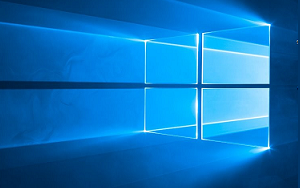Learn how to change the default browser on your iPhone with our step-by-step guide. Whether you prefer Chrome, Firefox, or another browser, we provide clear instructions for making the switch from Safari to your preferred browser.
Introduction
iPhones have long been renowned for their seamless integration with Apple's ecosystem, with Safari set as the default browser. However, iOS users may prefer using alternative web browsers such as Google Chrome, Mozilla Firefox, or Microsoft Edge for a more personalized browsing experience. This article provides a detailed guide on how to change the default browser on your iPhone, ensuring you can browse the web using the browser of your choice.
Why Change Your Default Browser?
There are several reasons why iPhone users might want to switch their default browser:
- Preference: Some users may prefer the user interface, features, or performance of a different browser.
- Synchronization: If you use a different browser on your desktop, switching to the same one on your iPhone can help with synchronization of bookmarks, history, and other data.
- Features: Alternative browsers may offer unique features not found in Safari, such as enhanced privacy tools or built-in VPNs.
Prerequisites
Before you begin, ensure that you have the following:
- An iPhone running iOS 14 or later.
- The desired browser app installed on your device.
- A stable internet connection.
Step-by-Step Guide to Change Default Browser on iPhone
Follow these steps to change the default browser on your iPhone:
1. Install Your Preferred Browser
- Open the App Store on your iPhone.
- Search for your preferred browser (e.g., Google Chrome, Mozilla Firefox, Microsoft Edge).
- Tap Get or the download icon to install the browser on your device.
- Once installed, open the browser at least once to ensure it initializes properly.
2. Access iPhone Settings
- Go to the Home Screen and open the Settings app.
- Scroll down and locate the list of installed apps.
3. Select Your Preferred Browser
- Find your installed browser in the list of apps and tap on it. For instance, tap on Chrome if you’ve installed Google Chrome.
- In the browser app settings, tap on Default Browser App.
4. Set as Default Browser
- From the list of available browsers, select your preferred browser. A checkmark will appear next to your selection, indicating it is now set as the default browser.
Verifying the Change
To verify that the default browser has been changed successfully:
- Open any app that contains web links, such as Mail or Messages.
- Tap on a link to open it. It should now open in your newly set default browser instead of Safari.
Troubleshooting
If you encounter any issues while changing your default browser, consider the following troubleshooting tips:
- Ensure Compatibility: Confirm that your iPhone is running iOS 14 or later, as earlier versions do not support changing the default browser.
- App Updates: Check for updates for both iOS and the browser app in the App Store to ensure compatibility and proper functionality.
- Restart Device: Restart your iPhone to rule out temporary glitches.
Conclusion
Changing the default browser on your iPhone allows you to customize your web browsing experience to better suit your preferences. Whether you choose Chrome, Firefox, or another browser, the process is straightforward and can be completed in just a few steps. Enjoy the flexibility to browse the web using the tools and features that work best for you.







